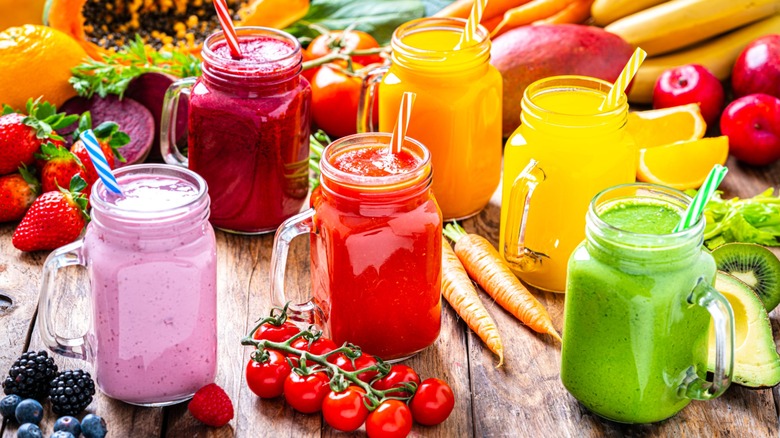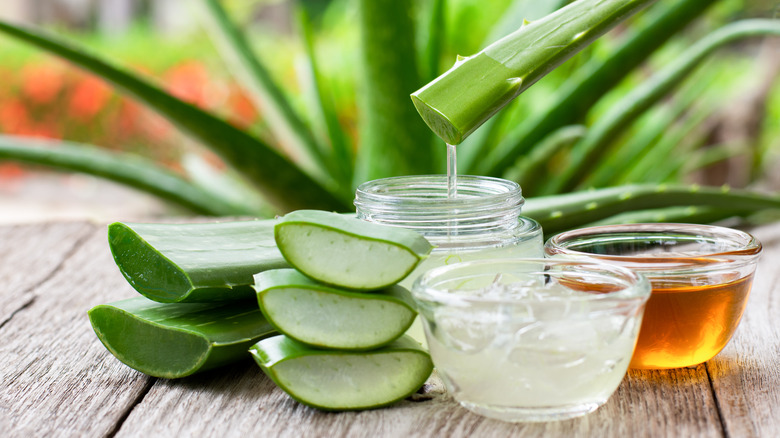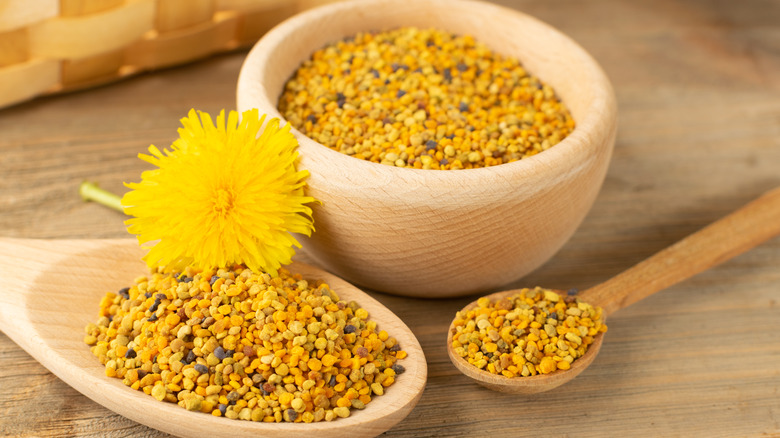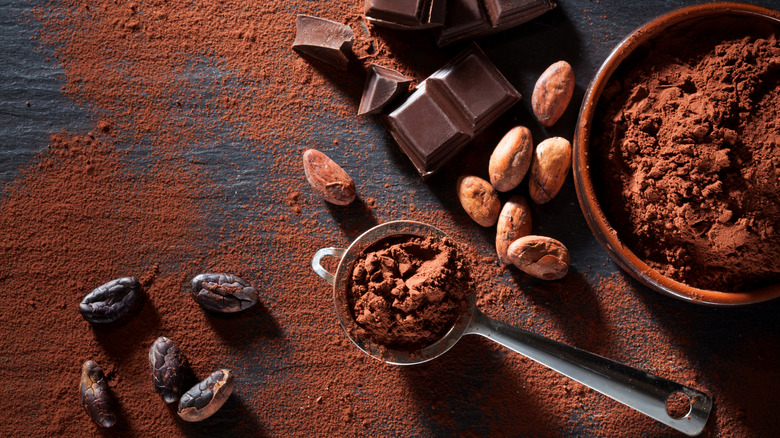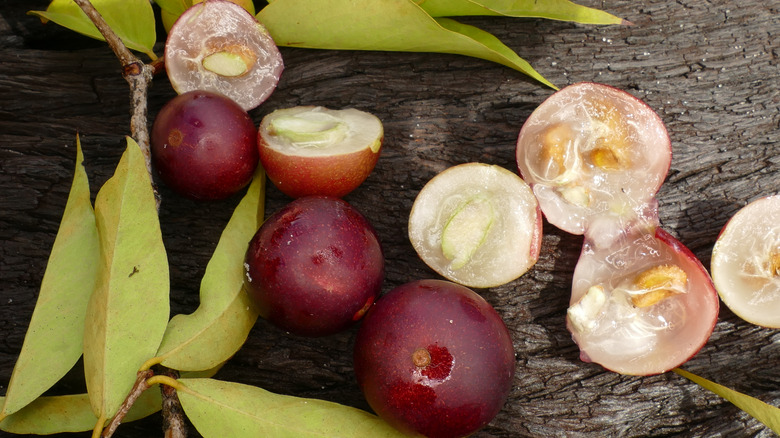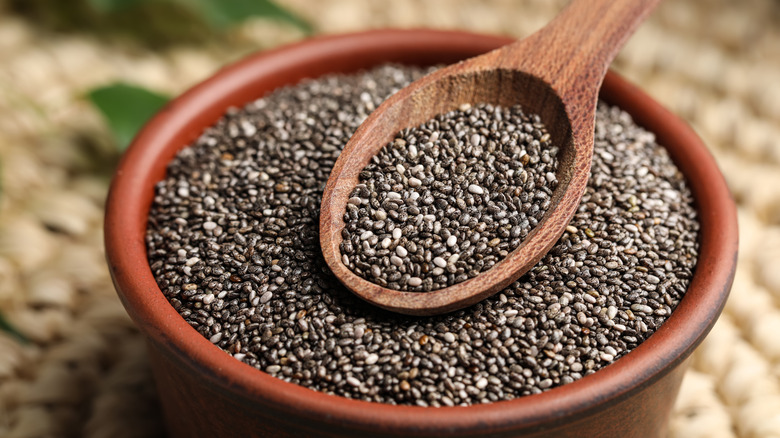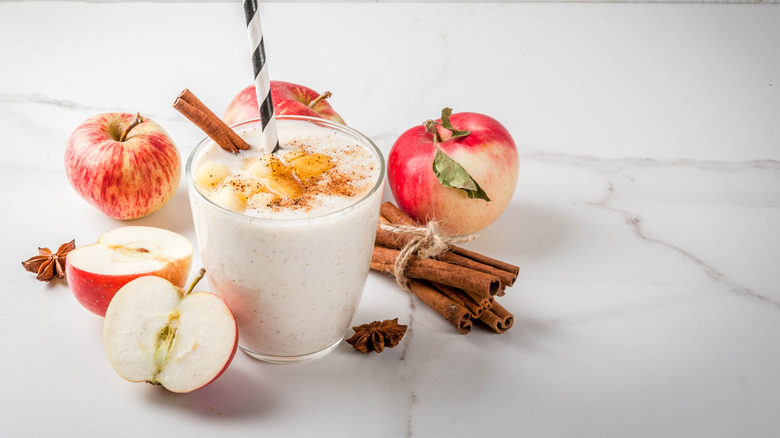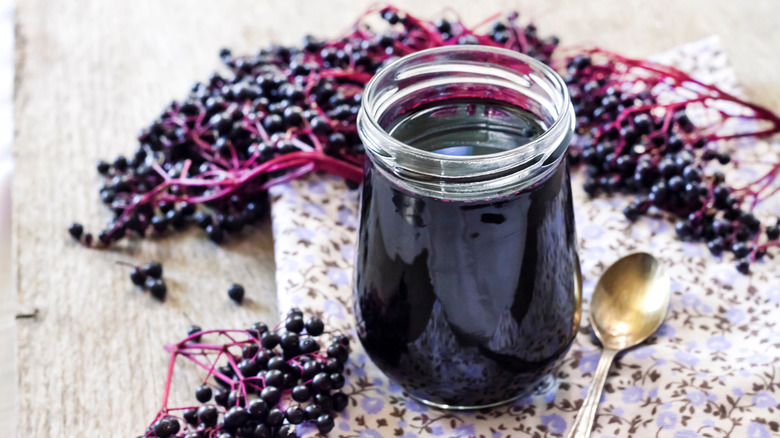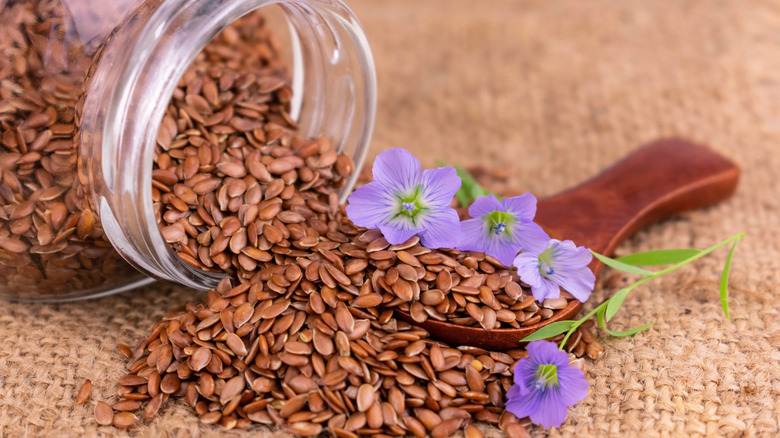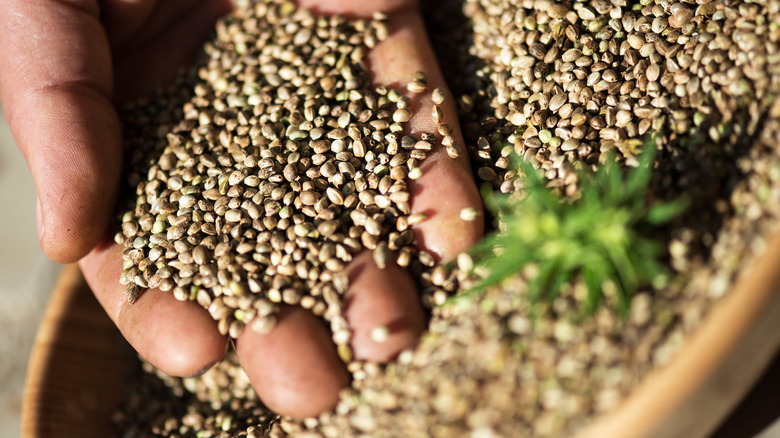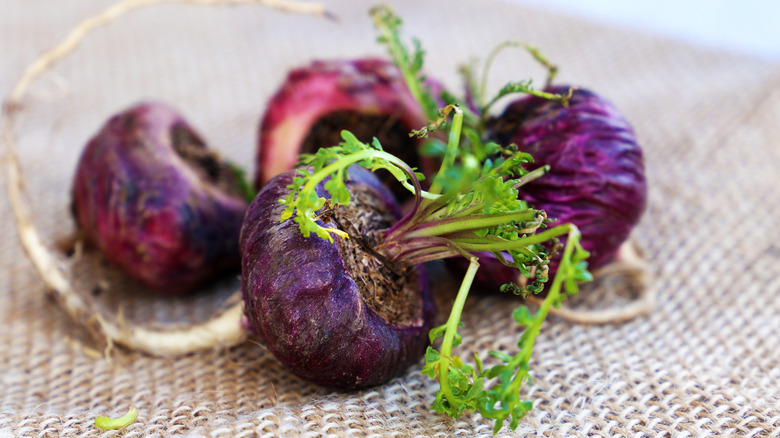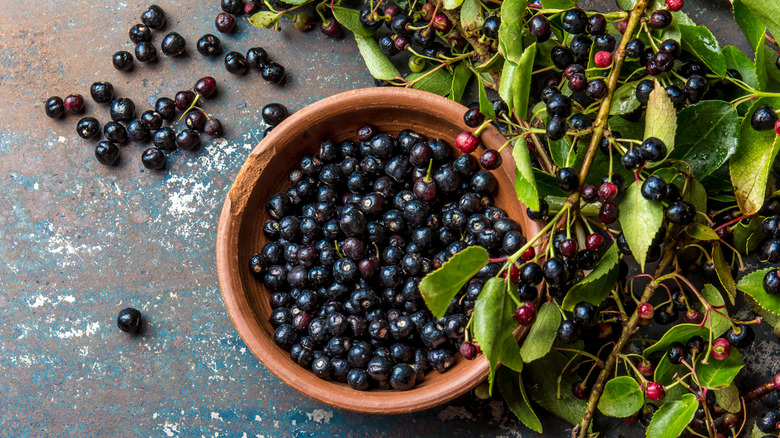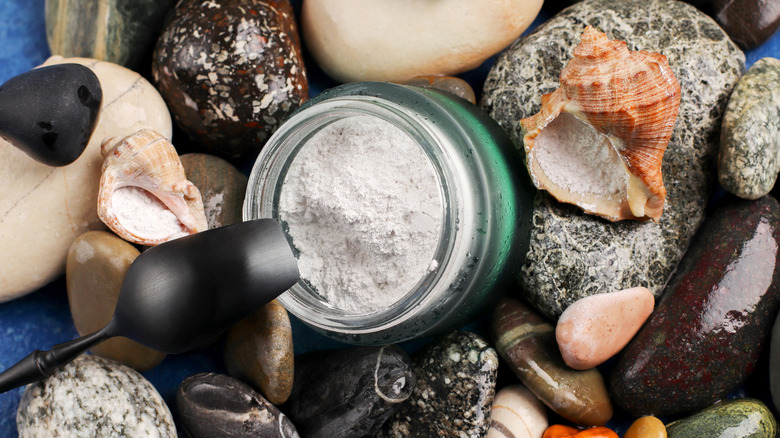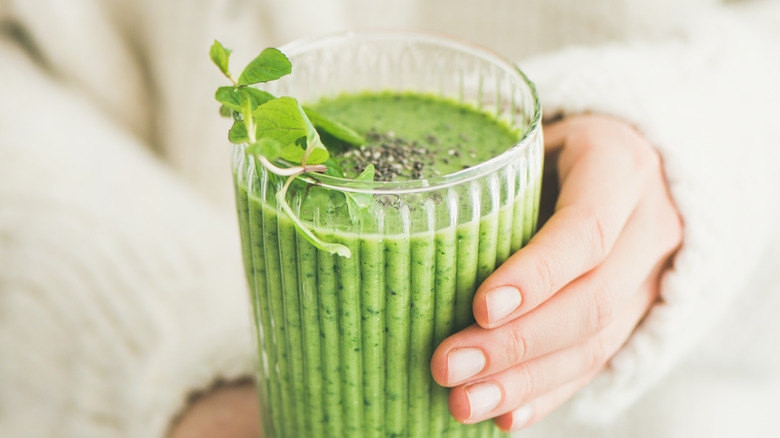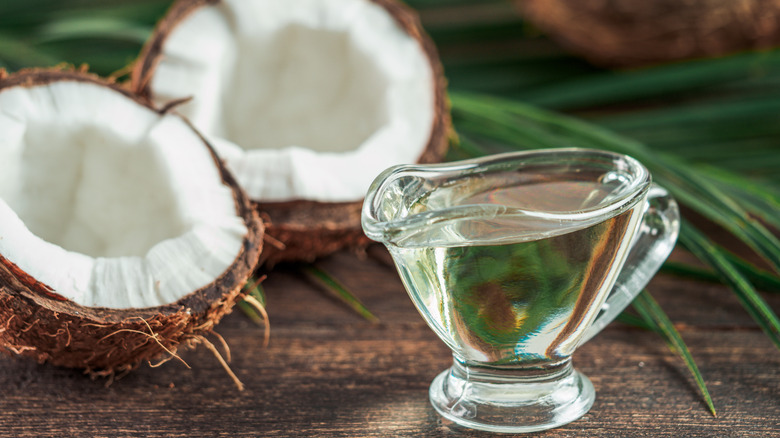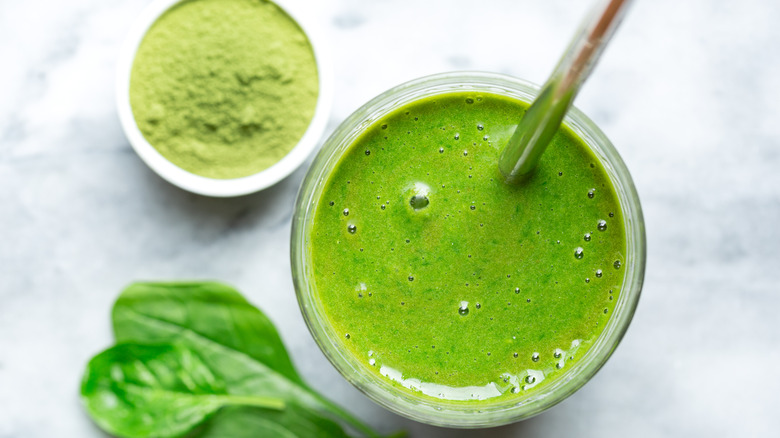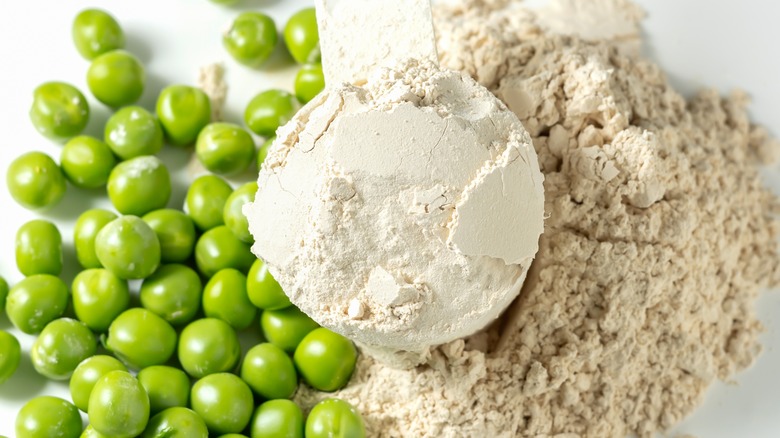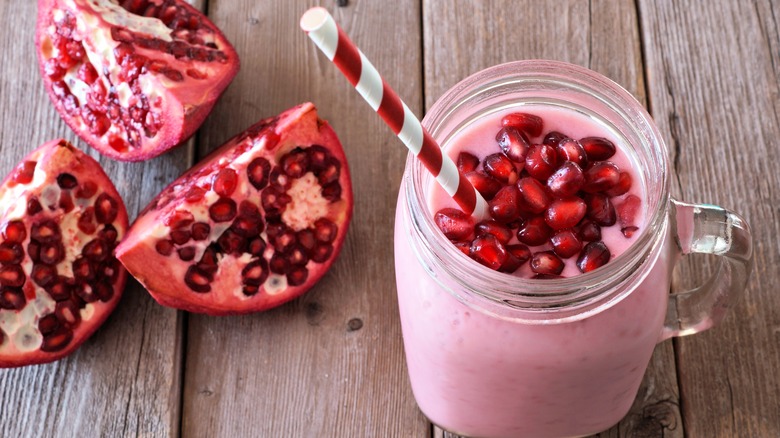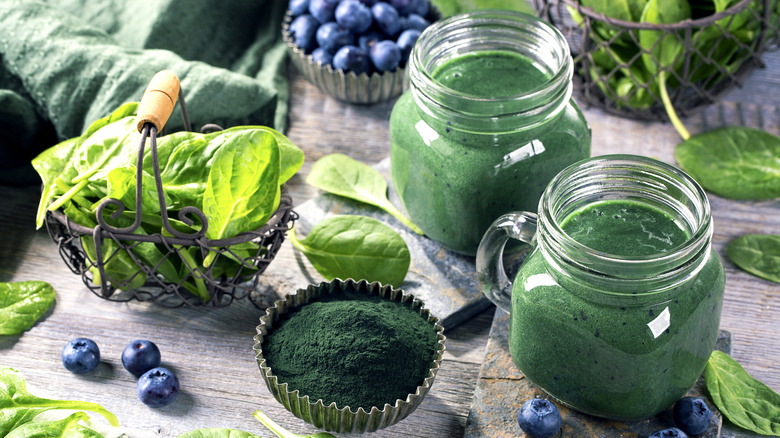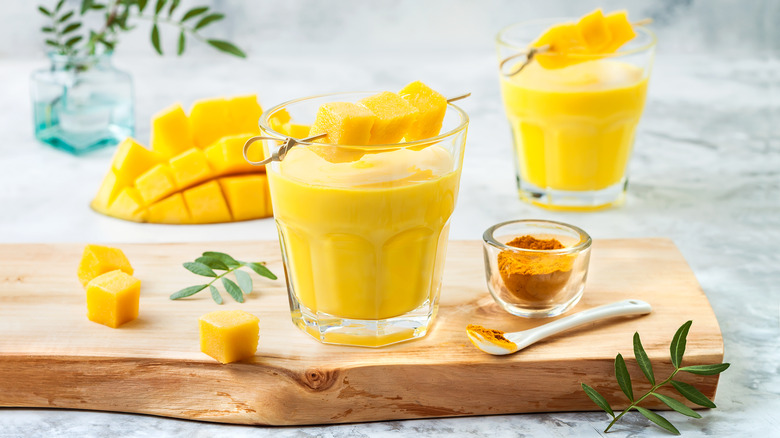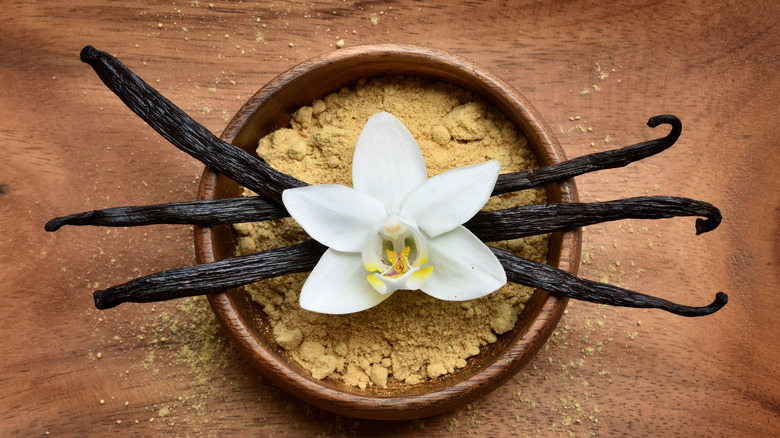20 Ways To Boost Your Smoothie With Superfoods
There's a long list of superfoods to consider adding to your diet, but don't worry, today we're leaving out the kale! Though there are no specific criteria that make something a superfood, they're all known for their abundance of nutritional content, explains Medical News Today. Below, we're focusing on seeds, powders, extracts, and oils that mix either neutrally or deliciously into smoothies, proving that health really doesn't have to taste bitter.
Before we begin, let's address the concern that not all smoothies are as nutrient-packed as they may seem. Utah State University Nutrition Extension advises that, when left unchecked, smoothies can lean towards a high sugar content, making it more of a dessert milkshake than a post-workout smoothie. That's totally fine if that's what you're looking for, but if you want a drink packed with protein, essential nutrients, and less sugar, it won't hurt to blend in some vegetables and superfoods alongside the fruit.
One final note before you start blending: Smoothies are best when the ingredients are in moderation and taste good, and supplements, no matter how beneficial, should not be overdone. As you experiment with powders and oils, keep in mind flavor balancing, textures, and overall thickness. It'll take a few attempts to nail a recipe to your exact preferences, but at least it'll be a tasty exercise!
Aloe vera
For hundreds of years, the gel inside the leaves of the aloe vera plant has been used as a topical folk medicine cure for skin irritations, but did you know it's also used to help people manage diabetes? According to the Journal of Food Science and Technology, by lowering the glucose effect and improving insulin resistance, aloe vera shows hypoglycemic activity that is beneficial to those with both pre-diabetes and Type 2 diabetes. Aloe vera was also shown to lower blood pressure in the same study.
There is an advisory label to aloe vera in that it does tend to have a laxative effect (via the Mayo Clinic), so it's probably not an ingredient you want to ingest on a daily basis (unless you're super backed up). For a truly refreshing smoothie, try aloe vera with kiwi, cucumber, coconut water, and chunks of frozen pineapple.
Bee pollen
With more than 250 bioactive compounds known to improve overall health, Healthline says it's clear why bee pollen has become a rising superstar in the field of health and wellness, with Germany's Federal Ministry of Health going so far as to label it medicine. In 2015, Evidence-Based Complementary and Alternative Medicine published a study showing that bee pollen is not only anti-inflammatory, anti-microbial, anti-viral, and anti-fungal; the little nuggets of gold are immuno-stimulating and can be used as an analgesic that aids in healing burn wounds.
One word of caution with bee pollen: Do not mix it into your smoothie if you are allergic to bees! Just Bee warns that people who have allergic reactions to bee stings may also be allergic to bee pollen. If you're unsure, either skip this one or start with a tiny dose that increases little by little over time (consult your doctor or allergist before any experimentation with known allergies).
Cacao
Chocolate for breakfast? Not quite, but we say close enough. Yes, chocolate and cocoa are made from processed cacao, but the raw product is free from sugar and other additives. Cacao can be found in solid form as nibs, or ground into a fine powder. Per Read Cacao, the pungent flavor profile skews chocolately, but you've got to brace yourself for some bitterness in there as well.
Still wondering whether cacao actually contains nutritional value? Nourish by WebMD says, oh yes it does! Flavonoids are where it's at for these magic beans that can reduce inflammation, risk of heart disease and diabetes, and lower blood pressure while they're at it. For those who are still not convinced, worry not, here's a study from Antioxidants & Redox Signaling that confirms our wish that chocolate is good for us. Try cacao powder blended with bananas, peanut butter, and your preferred nut milk base.
Camu camu powder
Specialty Produce notes that the flavor of these grape-sized berries is tart, tangy, and sour because they contain quite a bit of both ascorbic and citric acid. When using them at home in a smoothie, you'll want to mix in other sweeter fruits or consider adding a low-glycemic sweetener. That said, fresh camu camu fruit might be difficult to get your hands on due to the fact that they're from the Amazon, and they haven't yet caught on in the mainstream (via Specialty Produce). In powdered form, you'll find camu camu through nutritional supplement companies such as Sunfood.
A study from The Journal of Alternative and Complementary Medicine confirms the high antioxidant content within all parts of the berries including seeds, skin, and flesh. Furthermore, the study mentions that this fruit offers an excellent source of essential minerals.
Chia seeds
For many, chia seeds are a pantry staple, and with good reason. The Harvard School of Public Health (HSPH) categorizes chia seeds as functional foods, noting that they contain high levels of omega-3 fatty acids, known to improve cardiovascular health, as well as fiber and protein.
HSPH points out that the nutritional values of black and white chia seeds is the same. With little to no flavor, neither variety of seed is going to change the taste of a smoothie recipe; their singular role in your blender is as a nutritional boost. When they come into contact with your liquid base, the seeds will swell as they absorb water and the fiber will become almost gelatinous (via HSPH); to avoid this, simply pre-soak them before you blend.
Cinnamon
Anyone who loves baking knows that cinnamon is a critical ingredient when it comes to the best way to make apple pie. Considering it has been used in folk medicine for thousands of years, it's safe to say our most distant relatives liked it, too. A study from Pharmacognosy Research labels cinnamon a "clandestine ingredient" with "mystic powers," revealing a long list of health issues the spice can help improve; these include cancer, inflammation, diabetes, and Parkinson's disease. The study notes that there are four varieties of cinnamon, but the true spice is considered the one that comes from the Cinnamomum zeylanicum plant, which is commonly referred to as Ceylon or Mexican cinnamon.
Why not start your next cool autumn day with a smoothie made from Ceylon cinnamon, sliced apples, almond milk, and oatmeal?
Elderberry syrup
Prevention of diabetes and cardiovascular disease, beneficial bioactive compounds, medicinal properties that reduce oxidative stress, and a quality source of amino acids, vitamins, minerals, protein, and unsaturated fatty acids... the list of health and nutritional benefits provided by these small purple berries is extensive, to say the least (via the Journal of Functional Foods).
What's even better is that an elderberry bush is a shrub you can grow in your yard. When you find yourself getting really into the floral and fruity flavor and medicinal benefits of elderberries — and provided you've got space in the garden for it — why not try your green thumb at growing one? Before you know it, you'll be setting up the ranch as a homestead and concocting your own syrup to sell at the farmers' market. Bring on the goats and the compost bins!
Flaxseeds
One of the oldest crops in the world, the mighty flaxseed is labeled a superfood because a single tablespoon of the raw seeds contains more than the recommended intake (2 grams daily) of the powerful antioxidant called alpha-linolenic acid (ALA), per Mount Sinai. The outlet adds that flaxseed oil offers a whopping 8.5 grams of ALA per tablespoon, so if you're looking for a powerful dose, that may be the way to go.
According to Thrive Cuisine, the flavor profile of flaxseed is generally described as nutty with the brown seeds leaning towards earthy, and the golden variety less so. If you decide to go with the oil as your smoothie booster, that's what will really punch up the potency of flavor, otherwise, you might not even notice a difference.
Hemp seeds
From the widely versatile plant with a thousand uses, hemp seeds may be individually tiny, but they are loaded to the gills with an incredible amount of nutrition. They are high in omega-3 and omega-6 fatty acids, gamma-linolenic acid, vitamin E, and a slew of essential minerals, notes Healthline. With as much as 25% of total calories coming from high-quality protein, hemp seeds beat out both chia and flaxseed in this arena.
Furthermore, studies show that daily consumption of the seed oil is linked to improved cholesterol ratios, so that would also be a way to include nutritionally beneficial hemp in your diet. Now that we've really convinced with their prominence in the land of superfoods, it's time to get blending.
Maca powder
You may be looking at this picture wondering if we've mislabeled a pile of beets. In fact, maca powder comes from the root of a vegetable in the cruciferous family of vegetables (think cauliflower, broccoli, and Brussels sprouts), explains BBC Good Food. The outlet reports that this Peruvian superfood is touted as a libido enhancer capable of improving mood and energy, while also relieving the hot flashes and poor sleep associated with menopause. A study published in Pharmaceuticals confirms the root's ability to boost mood and energy.
A writer from The Cut cuts to the chase regarding maca's unusual flavor profile, professing that any claims of it tasting like caramel are absolute bunk, and that, no matter what you do, there is zero chance of masking the potent nuttiness, which they unironically compare to wood shavings. We leave it up to you to decide if it's worth the oral and olfactory risks.
Maqui berry powder
Not to be confused with the aforementioned maca powder, which comes from a root, maqui powder comes from berries that are native to Chile. Rainforest Supply points to improved eye health by reducing light-induced damage done to our ocular cells. This claim was put to the test by the scientistic community in 2014 and proven to be true (via Panminerva Medica).
Rainforest Supply goes on to strongly recommend the raw powder version of the supplement, warning that heating it would negatively affect any nutritional benefits. Since you're unlikely to find ripe maqui berries in your local supermarket anytime soon, we agree that the powder is the way to go. Mix it into a berry-based smoothie for an added punch of character and, of course, the elevation of your smoothie to superfood status.
Marine collagen
When it comes to collagen powders, you have a choice between bovine, porcine, marine, and chicken. Collagen Report notes that with marine collagen you get a sustainably sourced product that is easier for the body to absorb than the other options, along with the advantages of Types I and III collagen. Per Natural Force, these two types are specifically beneficial in regard to skin elasticity, hydration, and gut health; whereas bovine collagen offers Type II collagen for joint support.
In 2014, Clinical Interventions in Aging was able to show a reduction in visible signs of aging when liquid-based marine collagen was put to the test. Whether you choose a liquid or powder supplement, it should easily blend into any smoothie and with daily use, you may see your own skin elasticity and hydration improve over time.
Matcha
We get it if you prefer your matcha in latte form, but don't write it off as a bonus feature for your smoothies just yet. One Green Planet notes that the green powder powerhouse may be one of the most potent and nutritious superfoods you can consume, and we have to agree. Polyphenol antioxidants alone make up for 30% of its dry weight, according to a recent study published in Molecules, an open-access journal of chemistry. Furthermore, per the journal, most of the compounds found in matcha green tea exhibit antioxidant properties as well.
If you're the kind of person who likes to drink matcha every day, we suggest taking an occasional break from the lattes and blending the powder with frozen bananas, almond milk, and spinach for a nutrition-packed start to your day.
MCT oil
MCT stands for medium-chain-triglycerides, and when you see it on a label in the health and wellness section of your specialty grocery store, you can bet you're looking at a bottle of coconut oil. There's also a good chance you'll be standing in the vicinity of someone training for their next Ironman. Sports Performance Bulletin purports MCT oil to be "the perfect dietary fat for endurance athletes," and there's scientific research to back up the claim that it improves biogenesis and metabolism of the body's mitochondria, thus boosting exercise endurance (via PLoS One).
When starting out with MCT oil as a superfood smoothie booster, it is recommended that you add as little as 1 teaspoon and increase the amount slowly; your digestive system will appreciate the gradual increase of fat because it has to learn how to properly absorb it, adds Forbes Health.
Moringa
If you read what WebMD has to say, you might start believing the moringa plant produces the most important superfood you've never heard of before. Can it really prevent and treat hypoglycemia, heart disease, diabetes, cancer, gastric ulcers, malaria, and hypertension, then turn around and be used as a surface-sterilizing antiseptic? Actually, it might. According to a study published in the Asian Pacific Journal of Cancer Prevention, its wide range of health and nutritional benefits categorize this plant as a multi-purpose alternative medicinal.
Before jumping on the moringa bandwagon, buckle up for some intense flavor. The little-plant-that-could is nicknamed the horseradish tree due to the tang of its bitter-tasting roots, reports Vogue. The outlet adds that moringa powder will be bright green like matcha and taste similar with some peppery notes that spice it up.
Pea protein
The protein powder market is a relatively saturated one with aisle upon aisle in the health food store taken up by various options. It turns out that we might do the best turning to the little green pearls in our gardens. Per the Cleveland Clinic, a scoop of pea protein isolate contains amino acids that are easy for the body to absorb and as much as 20 grams of protein, which makes it a very strong contender in the realm of quality supplements.
The benefits don't stop there. Cleveland Clinic adds that pea protein is high in iron, which may be of particular interest to vegans and vegetarians unable to rely on meat for that essential nutrient. A study from the Journal of the International Society of Sports Nutrition shows a significant increase in muscle thickness when the protein supplement is used in conjunction with resistance training. This makes pea protein an excellent way to boost your smoothie if you're preparing for a sports event.
Pomegranate juice
The history of the pomegranate stretches back at least to the Bronze Age (5,000 B.C. — 3,000 B.C.) and perhaps even earlier than that, with some scholars believing it to have been the very first fruit ever cultivated (via ResearchGate). A fruit that's been around for that long must definitely have a lot going for it. Numerous studies have shown the extract and juice contained within the seeds (technically called arils) to be packed with nutrition, including one study conducted by Applied Physiology, Nutrition, and Metabolism that focused on the pomegranate's ability to positively affect blood flow, thus delaying fatigue, while participants were running.
Better yet, they taste really good, too! Use pomegranate juice for the base of a berry smoothie, or just add a splash along with almond or coconut milk. Don't forget the presentation and sprinkle a handful of arils on top of the finished product before serving.
Spirulina
If your powdered matcha simply isn't green enough for you, blend in a scoop of spirulina, a superfood that comes from algae in the ocean and is one of the oldest plants in existence, according to the Cleveland Clinic. Yes, of course, spirulina is high in antioxidants, but the clinic indicates that it's also an excellent source of iron and beta-carotene, which sets it apart from most of the others on this list.
Naturally, you'll notice a hint of the salty sea when adding spirulina to a smoothie, and you should be warned that it can be used as a dye (via Wildly Organic), which likely means the rich emerald hue will transfer easily from your fingers to your crisp white shirt if you're not careful. Tie on your apron and bust out the blender. Spirulina will mix well with sweet fruits like mangoes and blueberries.
Turmeric
It's the anti-inflammatory properties of turmeric that launch the spice into the stratosphere of superfoods. Turmeric has been used in Ayurvedic medicine to treat inflammation for millennia, and the Alternative Medicine Review reports that there are many clinical trials regarding its anti-inflammatory mechanisms. The review explains that, because tumor growth is linked to a state of pro-inflammation, researchers are hopeful that turmeric can help reduce those instances. The outlet adds that it also aids in the fight against ulcerative colitis and rheumatoid arthritis.
Consider blending turmeric powder into a cool mango lassi, which calls for frozen mango chunks, plain yogurt, whole milk, cardamom, honey, and lime juice. For a vegan option, skip the honey and opt for coconut milk and a coconut-based yogurt to really up the tropical appeal of this one.
Vanilla bean powder
Sweet, delicious vanilla is not only one of the world's most sought-after and revered flavorings. According to Organic Facts, it also has the potential to reduce inflammation due to its high levels of antioxidants. In a 2007 study published in the Journal of Agricultural and Food Chemistry, components of the vanilla extract showed promising potential for use as antioxidants and nutraceuticals, an umbrella term for medicinally beneficial food sources (via News Medical).
You can absolutely make homemade vanilla extract by getting your hands on some bean pods and alcohol, but the process takes over a month. When buying vanilla extract at the store, you'll recognize a quality product by an alcohol content of at least 35% per volume, notes the U.S. Food & Drug Administration. For the best of the best, choose the option with the fewest amount of additives. No matter what flavor smoothie you're blending up, chances are good a shot of vanilla extract will make it taste even better.
